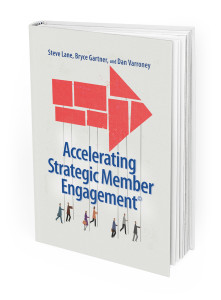CEO Doubles Association Membership
While the road to success differs from one Association to another Data Driven Strategies, Core Connections and Member Engagement are critical to success. How these are applied are a different story. The Air Conditioning Contractors of America (ACCA) led by Paul T. Stalknecht, President and CEO, www.acca.org, are entrepreneurs and a mirror image of their members. Member focus and risk taking swelled their membership ranks from 2,000 to almost 4,000. The story doesn’t end there either as ACCA revenues have growth by some 272% during Stalknecht’s twelve year tenure.
Building a Foundation
Similar to many new CEO’s, Stalknecht conducted an extensive due diligence process. Upon his arrival he actively and aggressively asked key questions to learn as much as possible, separating the information into three distinct categories: Administrative issues, Membership marketing and Governance. Over an intensive six month process, he spoke with staff, members and his board to gain a full understanding of all of the issues facing the Association.
Stalknecht assimilated all of the information into a power point document. The extensive report outlined areas of concern and clear action steps that ACCA should take in order to move the Association forward. Receiving Board support, he built a foundation which delivered almost 10 consecutive years of profitability.
Entrepreneurial Culture
Throughout the conversation, it’s easy for an observer to note Stalknecht’s self awareness. Openly he acknowledges his weaknesses before his strengths. However, he demonstrates how an effective leader leverages his skill gaps as opportunities to recruit high performing executives to help him build a high performing Association.
His passion about hiring the best people available would over time prove to be one of two game changing decisions for ACCA. Interestingly enough, the three Senior Vice President’s he hired from the beginning of his CEO service are still on staff at the Association.
Mickey Mantle Approach
Regardless of Baseball Team allegiance, what is compelling is how Stalknecht encourages risk taking. With margins of error narrow, he encourages his team to use a data driven strategies and feedback mechanisms to pursue new product or service ideas for the membership. The explosive revenue growth shows how taking a good hard swing at the pitch could pay off in the long run.
Core Connections
Core Connections means Associations position themselves as strategic partners helping member, prospect and sponsor companies achieve their business objectives. That is especially the case at ACCA. Their revenue streams, staff structure and capability are all connected to helping their market place achieve its business objectives. An integral part of this Association’s culture is listening.
Mapping to Core Connections
With annual revenues approaching $7 million, ACCA delivers income from three areas: Membership dues, Products and Training and their Meetings and Corporate Partner Program. Sitting atop of a diverse revenue streams is both necessary and advantageous. The membership, comprised of small company entrepreneurs, experienced considerable turnover which impacts the Association’s retention. Recognizing this early on, Stalknecht and his team made key adjustments.
Game Changers
Prior to his arrival at ACCA Stalknecht observed the lack of a full time research and engineering staff. Building a highly skilled team the Association delivers leading standards and certification in printed materials and online training programs for the entire HVAC industry. Approximately one third of revenues emanate from their educational training and products area.
A critical shift during the great recession turned out to the “grand slam” ACCA needed. A Sponsorship program was newly defined as a Corporate Partner program. Companies now had an opportunity to invest in ACCA’s groundbreaking education and training programs and it’s advocacy mission. Company ROI is now realized all year long and at the annual convention. What was once a revenue stream of $140,000 well surpasses $1 million.
Tracking and Accountability
Stalknecht emphasizes the importance of accountability and measuring progress. Each day he views a cash flow report and profit and loss performance to make sure bottom line performance is meeting or exceeding his high expectations.
CEO Doubles Association Membership
Data Driven Strategies, Core Connections and Member Engagement are all part of CEO Paul Stalknecht’s leadership toolbox. What matters most to Stalknecht and his team is delivering the best possible ROI to his members and the HVAC community. Few would question a Team of entrepreneurs whose Manager applauds his team as they circle the bases year after year.
Free eBook “Accelerating Strategic Member Engagement” is available for all Association Executives at www.potomaccore.com,www.icimo.com,and www.verticalleapconsulting.com.





